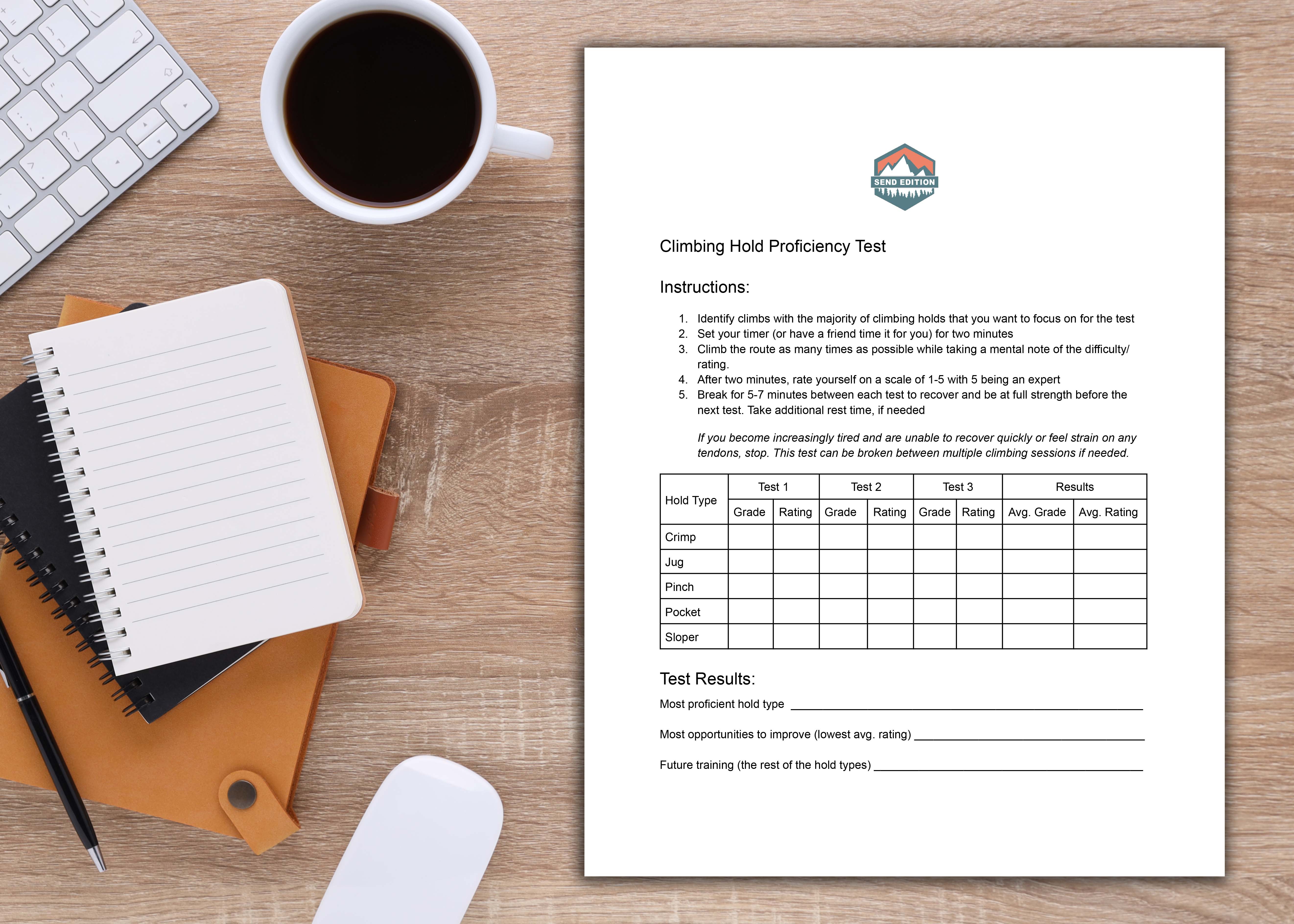Whether you’re just starting out or looking to refine your skills, this test is designed to help you identify which climbing holds are your strong suit and which ones might be holding you back.
By focusing on the five basic hold types—crimps, jugs, pinches, pockets, and slopers—you’ll gain insights into your personal climbing profile.
This knowledge is crucial for tailoring your training to become a well-rounded climber. Not only will this test guide you in enhancing your grip strength and technique for specific holds, but it also offers a structured way to track your progress.
Safety is a priority; hence, the test includes built-in breaks and guidelines to ensure you listen to your body’s signals.
Whether you choose to tackle this test in a single session or spread it out over multiple visits to the gym, you’ll find it an invaluable part of your climbing journey. Download the test today, and start climbing smarter, not harder!
Why every climber, especially beginners, should take this test:
This test is not just about challenging yourself; it’s a tool designed to pinpoint your proficiency with various climbing holds—crimps, jugs, pinches, pockets, and slopers.
- Awareness and Insight: Gain a clear understanding of your strengths and weaknesses. Knowing which holds you master and which ones you struggle with can shine a light on specific areas you need to focus on.
- Targeted Training: With insights from the test, you can customize your training sessions to concentrate on improving your grip strength and technique for holds that challenge you the most. This targeted approach ensures efficient use of your training time and efforts.
- Progress Monitoring: The test acts as a benchmark for your climbing skills. By periodically repeating the test, you can track your improvement over time, providing a motivational boost and insightful feedback on your training effectiveness.
- Goal-Oriented Motivation: With clear metrics from the test, set specific, achievable goals. This structured approach not only helps in maintaining focus but also in achieving measurable progress in your climbing abilities.
- Safety and Adaptability: We emphasize safety with recommended breaks and guidelines to prevent overexertion and injuries. Additionally, the test is versatile, suitable for both bouldering and sport climbing enthusiasts.
By incorporating this test into your routine, you equip yourself with knowledge that transforms your training, enhances your climbing performance, and ultimately, elevates your climbing experience. Take the first step towards becoming a more proficient and confident climber by downloading our free Climbing Hold Test today.

How to test your proficiency
This is a basic test that will help you identify your strengths and opportunities to improve. Recognizing the types of climbing holds that you are proficient in vs. the climbing holds that you need to work on will help inform your training to help you become a better climber.
What You’ll Need:
- A climbing gym that matches whatever climbing you do (aka bouldering vs sports climbing, etc.)
- A printout of the test is available below
- Timer (Optional)
Instructions:
- Identify climbs with the majority of climbing holds that you want to focus on for the test
- Set your timer (or have a friend time it for you) for two minutes
- Climb the route as many times as possible while taking a mental note of the difficulty/ rating.
- After two minutes, rate yourself on a scale of 1-5 with 5 being an expert
- Break for 5-7 minutes between each test to recover and be at full strength before the next test. Take additional rest time, if needed
If you become increasingly tired and are unable to recover quickly or feel strain on any tendons, stop. This test can be broken between multiple climbing sessions if needed.
